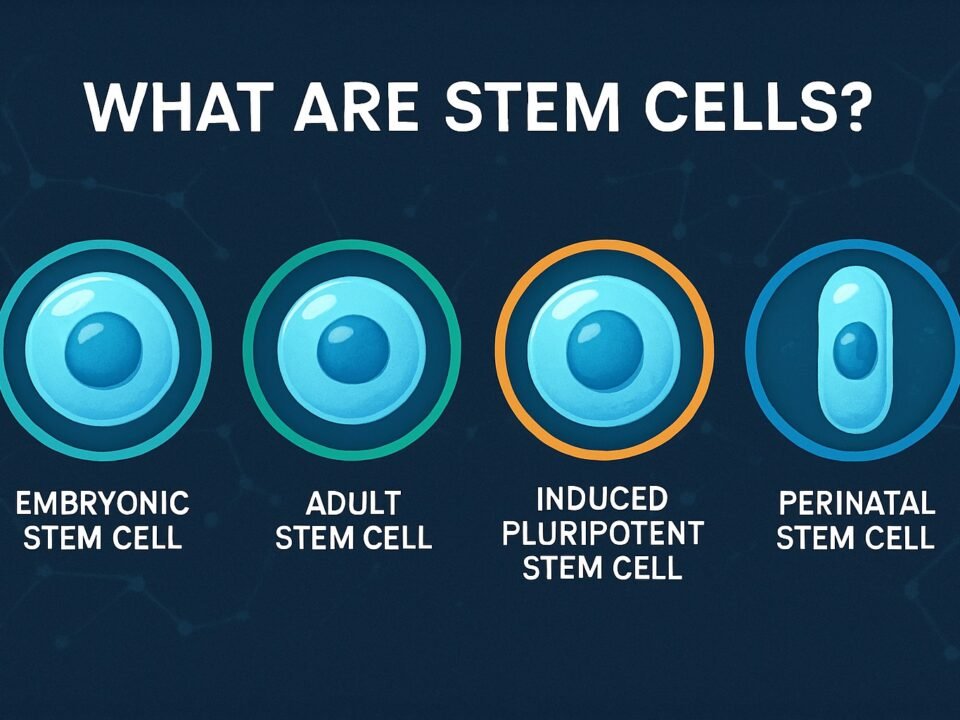
Specifications Don’t Tell the Whole Story: How to Choose GMP Process and QC Equipment
November 24, 2024
What Are Stem Cells? An In-Depth Guide to All Types and Their Potential
August 12, 2025Introduction
Regenerative medicine is one of the most transformative fields in modern healthcare, aiming to repair, replace, or regenerate damaged tissues and organs. Its potential spans from treating spinal cord injuries to reversing degenerative diseases and even growing replacement organs in the lab.
At the center of this revolution are stem cells — unique, undifferentiated cells with the remarkable ability to self-renew and develop into specialized cell types. But for stem cells to realize their potential, they must be nurtured in an environment that supports their growth, stability, and directed development. This is where stem cell culture media plays an irreplaceable role.
Why Stem Cell Culture Media Matters
Stem cell culture media is not just a nutrient bath — it’s a carefully balanced microenvironment that directly affects:
Cell Survival – The right balance of nutrients ensures cells remain viable and healthy.
Proliferation Rates – Optimal formulations encourage robust, predictable cell growth.
Differentiation Control – Specific additives can keep cells undifferentiated or guide them toward particular lineages.
Functional Integrity – Cells grown in appropriate conditions exhibit behaviors and functions closer to those in the human body.
Without high-quality media, even the most advanced stem cell lines can fail to thrive, leading to inconsistent research results or failed clinical-scale production.
Key Components of Stem Cell Culture Media
1. Basal Nutrients
The foundation of any culture medium includes essential amino acids, vitamins, minerals, salts, and an energy source such as glucose. These components support basic cell metabolism and structural maintenance.
2. Serum or Serum Replacements
Historically, many culture systems relied on fetal bovine serum (FBS) to supply growth factors and hormones. However, variability between batches has led to a shift toward serum-free, chemically defined formulations that improve reproducibility and safety.
3. Buffering Systems
A stable pH is critical for cellular function. Buffers such as sodium bicarbonate work alongside CO₂ incubators to maintain an environment similar to the human body.
4. Specialized Additives
Growth factors, cytokines, small molecules, and signaling pathway modulators can be included to maintain pluripotency or to promote differentiation into specific cell types such as neurons, cardiomyocytes, or hepatocytes.
Types of Stem Cell Media
Maintenance Media – Keeps stem cells undifferentiated for long-term expansion.
Differentiation Media – Encourages stem cells to become specific cell types for research or therapeutic purposes.
Xeno-Free and GMP-Grade Media – Meets the stringent safety requirements for clinical applications, eliminating animal-derived components and ensuring compliance with Good Manufacturing Practices.
Challenges in Stem Cell Culture
Batch-to-Batch Variability
Even small changes in the concentration of growth factors or hormones can alter experimental outcomes. This is especially critical in long-term projects where reproducibility is essential.Contamination Control
Stem cells are sensitive to microbial contamination, which can alter their behavior or kill entire cultures. Working in ISO-class cleanroom facilities and using sterile media greatly reduces this risk.Scalability
Growing enough cells for clinical applications requires media that performs consistently across small-scale and large-scale cultures, including bioreactor systems.
The Role of Media in Regenerative Medicine Applications
Disease Modeling
Patient-derived stem cells can be cultured into organoids or tissues that mimic specific diseases, allowing researchers to study pathology in a controlled environment.Drug Screening
High-throughput screening of drug candidates on human-relevant models reduces reliance on animal testing and increases the accuracy of predicting human responses.Cell Therapy
From CAR-T cell therapies to stem cell transplants, clinical-grade media ensures cells meet strict safety and functional criteria before being used in patients.Personalized Medicine
Custom-formulated media can be tailored to a patient’s own cells, improving treatment outcomes and minimizing rejection risks.
ecoZist’s Approach to Stem Cell Media
At ecoZist Corp., our mission is to provide researchers and clinicians with the most reliable, reproducible, and customizable cell culture solutions. Our stem cell media portfolio is:
Manufactured in ISO 7 cleanroom environments to ensure sterility and quality.
Available in xeno-free, chemically defined, and GMP-grade formulations for both research and clinical use.
Batch-tested for performance to ensure consistent results.
Customizable for unique cell types, differentiation protocols, or research goals.
We also integrate lot-specific Certificates of Analysis (CoA) with our online lookup system, so customers can instantly verify product quality using their lot number — a level of transparency rarely offered in the industry.
Practical Tips for Researchers
Always use the same lot of media for critical experiments to avoid variability.
Store media at recommended temperatures and avoid repeated freeze-thaw cycles.
If switching media formulations, run parallel cultures to compare performance before fully transitioning.
Keep detailed records of lot numbers, passage numbers, and experimental conditions — reproducibility is key.
Conclusion
Stem cell culture media is more than just a background element — it is a decisive factor in the success of regenerative medicine research and applications. By providing the right biochemical cues and maintaining a stable, contamination-free environment, media enables scientists to push the boundaries of what’s possible in healthcare.
As regenerative medicine moves toward widespread clinical adoption, the demand for high-quality, consistent, and specialized media will only grow. At ecoZist, we are committed to delivering solutions that meet these challenges, helping our partners translate innovative science into real-world therapies.
Discover ecoZist’s advanced stem cell culture solutions → [Shop Now]

